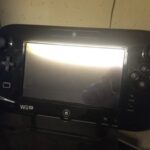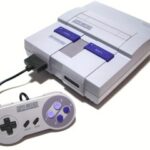In 1979, Milton Bradley, maker of popular board games, released a video game console: Microvision.
Microvision was to become the world’s first handheld portable game console – that is, the first to be “reprogrammable.” A number of dedicated handheld units that only played one or two built-in games has been around for a little while, but Microvision has earnd its place in history. It would take ten years for a successor, the touted Nintendo Game Boy, to arrive on the scene, making Microvision a concept far ahead if its time.
The Microvision unit was, and in many ways still is, incredibly innovative and unique.
Due to the limited technology of the late 70’s and early 80’s, this system did not have a color screen; instead, it used a primitive form of LCD technology.
Unfortunately, the screen is very sensitive to heat and other elements, and is therefore prone to a phenomenon known as “Screen Rot.” Fortunately, many units have surviving screens and can be purchased for less than $50 on auction sites, such as eBay.
Cartridges
In order to make the unit as compact as possible, Milton Bradley’s engineers made an interesting design decision; the unit’s central processor was actually hardwired into each individual game cartridge as opposed to the motherboard of the actual console. Because, the processor for each game is on the cart itself, Microvision is among the only consoles to never be emulated.
Each cartridge covers the entire face of the game console. In addition to having an on-board CPU, each game also have a built-in screen overlay and control scheme.
Screen overlays were popular with the colorless vector-based arcade games of the era. Considering the Microvision’s monochrome LCD graphics, overlays were the logic measure to enhance the visual appeal.
Control
The Microvision unit featured two unique control interfaces. The first, a touch-sensitive capable of performing nine separate functions, thereby giving it the functionality of nine different buttons.
The built-in control scheme of each cartridge made custom use of some or all of the possible button combinations.
The second, a “paddle” knob, perfectly suited for the console’s pack-in Break Out clone, Blockbuster.
Games
A total of thirteen games were released for the console. Twelve games were released in the United States, while the remaining title, Super Blockbuster, was only released in European markets. Super. A fourteenth game, Barriage, was promoted, bud was never released, and no prototypes are known to exist.
Out of the entire library, one game, Sea Duel, stands the test of time. Though it is merely a simple turn-based strategy game, it proves that an innovative formula can still command attention in a world of Xbox 360 and Nintendo Wii.
Additionally, many other titles have held up well over the years, such as Bowling and Blockbuster.
Milton Bradley’s Microvision hand-held game console is a unique piece of history; anyone with a few extra dollars and an eBay account should consider spending the twenty to thirty dollars it takes to become an owner. Falling in love with gaming again has never been so simple.



